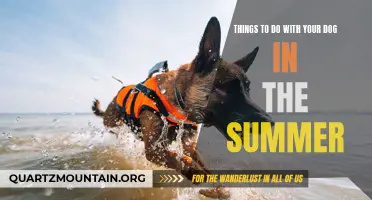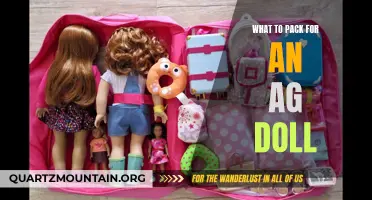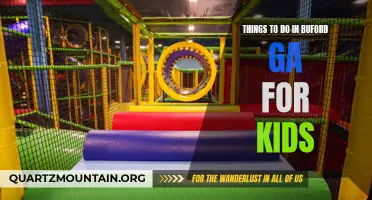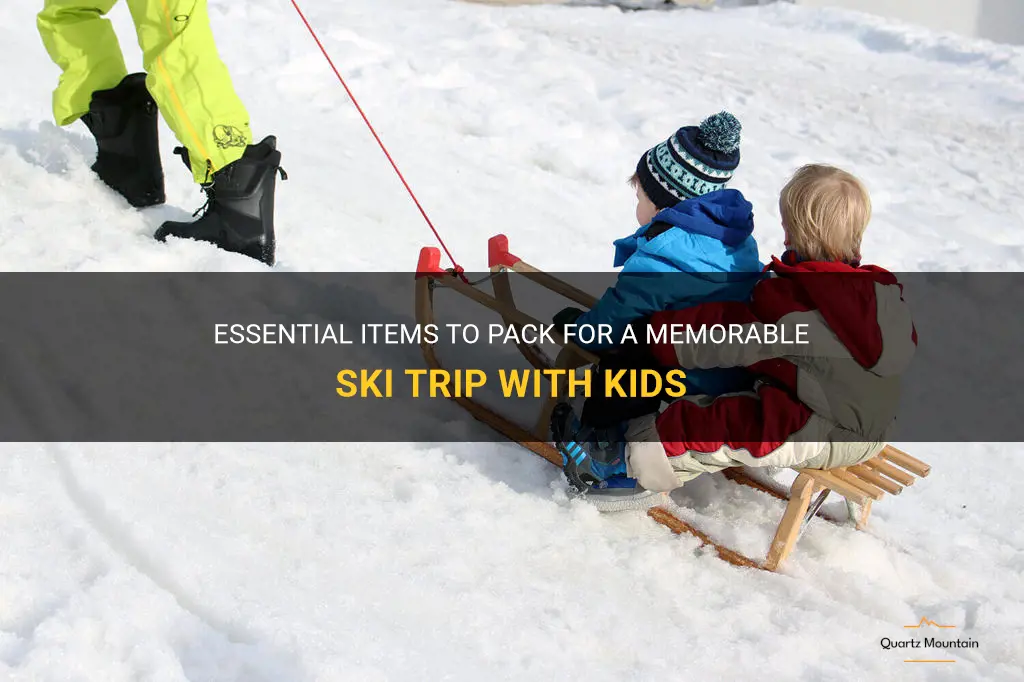
Are you planning a ski trip with your little ones and wondering what to pack? Look no further! In this article, we will guide you on the essential items to bring to ensure that your ski trip with kids is not only enjoyable but also memorable. From warm clothing and ski gear to entertainment and safety items, we've got you covered. So, grab a cup of hot cocoa, sit back, and get ready to create unforgettable family memories on the slopes!
What You'll Learn
- What are the essential items to pack for a ski trip with kids?
- How should I dress my kids for a ski trip?
- What type of equipment should I bring for my kids, such as skis or snowboards?
- Are there any specific safety items I should pack for my kids on a ski trip?
- What are some recommended clothing accessories to pack for my kids on a ski trip, like hats or gloves?

What are the essential items to pack for a ski trip with kids?
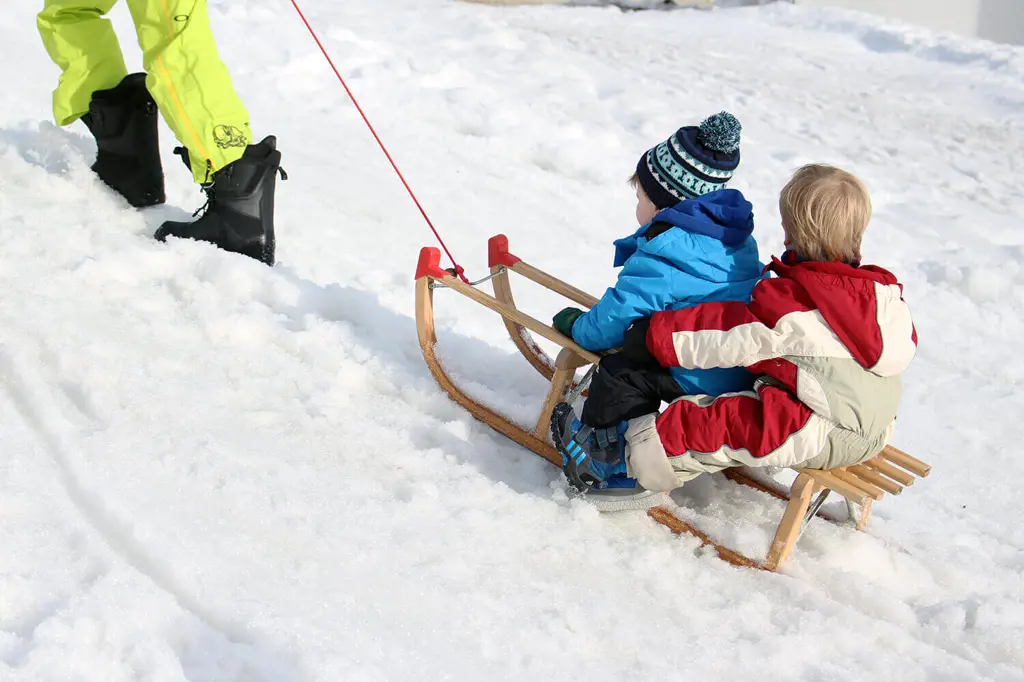
Ski trips with kids can be a lot of fun and create many lasting memories. However, it's important to pack all the essential items to ensure a smooth and enjoyable trip. Here are some must-have items to pack for a ski trip with kids:
- Warm Clothing: Dressing in layers is key to staying warm while skiing. Make sure to pack thermal base layers, fleece jackets or sweaters, waterproof ski pants, and insulated ski jackets for each child. Don't forget to pack extra socks and gloves as well.
- Ski Gear: If your kids are not experienced skiers, renting ski gear is a good option. However, if they have their own equipment, make sure to pack their skis, ski boots, helmets, and goggles. It's crucial to ensure that the equipment fits properly and is in good condition for safety on the slopes.
- Sun Protection: Protecting your kids from the sun's harmful UV rays is essential, even during winter. Pack sunscreen with a high SPF, lip balm with SPF, and sunglasses or ski goggles with UV protection. Additionally, consider packing a neck gaiter or balaclava to cover their faces from the wind and cold.
- First Aid Kit: Accidents can happen on the slopes, so it's vital to have a well-stocked first aid kit on hand. Include items such as band-aids, antiseptic ointment, blister pads, pain relievers, and any necessary medications your child may need.
- Snacks and Water: Skiing can be physically demanding, so it's important to keep your kids energized and hydrated. Pack a variety of healthy snacks such as granola bars, fruit, trail mix, and sandwiches. Don't forget to bring plenty of water or have a hydration pack for each child.
- Entertainment: Ski trips often involve downtime, such as waiting for ski lessons or relaxing in the cabin. Pack books, puzzles, card games, or tablets loaded with age-appropriate games or movies to keep your kids entertained during these moments.
- Extra Clothing: Accidents and spills are common when skiing with kids. Pack extra sets of clothing, including underwear, pants, and socks, in case of emergencies. Having a waterproof bag to store wet or soiled clothing is also a good idea.
- Snuggy Tools: It can be challenging for kids to put on and take off ski boots, especially when they are cold. Consider packing snuggy tools like boot jacks or boot heaters to make the process easier and more comfortable for your kids.
- Extra Safety Measures: Safety is paramount when skiing with kids. Consider packing items like ski harnesses or leashes for younger children, wrist guards for snowboarders, and avalanche safety gear if you plan to ski off-piste.
- Insurance and Important Documents: Before your ski trip, ensure you have the necessary insurance coverage, including travel insurance and medical coverage. Additionally, bring important documents such as identification cards, passports, and any necessary ski resort passes.
Remember, each child is different, so make sure to pack items specific to their age, preferences, and special needs. By packing these essential items, you'll ensure that your ski trip with kids is a fun and safe adventure for everyone involved.
Essential Items to Pack for a Haida Gwaii Vacation
You may want to see also

How should I dress my kids for a ski trip?
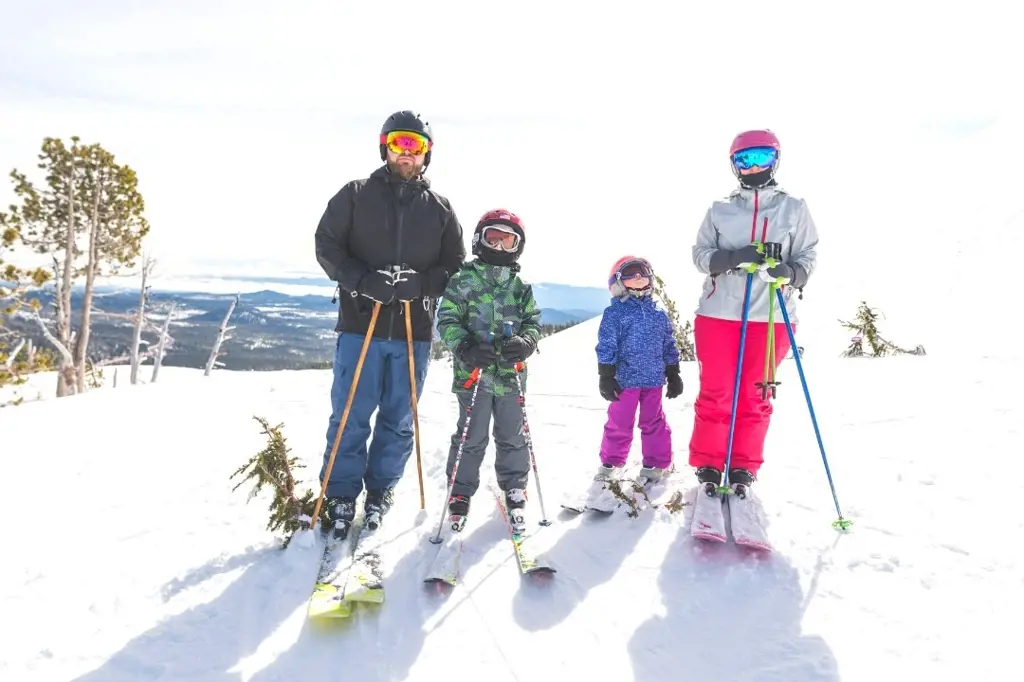
Preparing for a ski trip with your kids involves more than just gathering the necessary equipment. Dressing your children appropriately is crucial to ensure they stay warm and comfortable throughout their time on the slopes. Here are some tips to help you dress your kids for a ski trip:
- Layering is key: Dressing your kids in layers is essential for skiing, as it allows you to adjust their clothing according to the temperature and their activity level. Start with a moisture-wicking base layer that will absorb sweat and keep their skin dry. Follow this with an insulating mid-layer, such as a fleece or down jacket, to provide warmth. Finally, add an outer layer that is waterproof and windproof to protect against the elements.
- Choose the right materials: When selecting clothing for your kids, opt for materials that are designed for outdoor activities. Look for ski-specific clothing made from synthetic materials that offer good insulation and moisture-wicking properties. Avoid cotton, as it absorbs moisture and can make your kids feel cold and uncomfortable.
- Don't forget the accessories: Hats, gloves, and goggles are essential accessories for a ski trip. Make sure your kids wear a well-fitted helmet to provide protection in case of falls. Insulated gloves or mittens will keep their hands warm, and goggles will protect their eyes from sun, wind, and snow. It's also important to pack extra hand and toe warmers in case they are needed.
- Pay attention to socks and boots: Invest in high-quality ski socks that are designed to keep feet warm and dry. Avoid cotton socks, as they tend to become damp and can cause blisters. Ensure that your kids' ski boots fit properly and are not too tight or too loose. Ill-fitting boots can lead to discomfort and poor performance on the slopes.
- Consider the weather conditions: The weather can change quickly in the mountains, so it's important to be prepared. Check the weather forecast before your trip and dress your kids accordingly. If it's cold and windy, layer up and add extra insulation. If it's sunny and mild, opt for lighter layers and remove unnecessary clothing.
- Encourage breaks and hydration: Skiing can be physically demanding, especially for kids. Encourage them to take breaks and drink plenty of fluids to stay hydrated. Dressing them in appropriate clothing will help regulate their body temperature and reduce the risk of overheating or getting too cold.
In conclusion, dressing your kids for a ski trip requires careful consideration of the weather conditions and appropriate layering. By following these tips, you can ensure that your children stay warm, comfortable, and safe throughout their ski adventure. Remember to invest in high-quality ski clothing and accessories, and pay attention to the fit of their boots. With the right clothing, your kids will be ready to enjoy their time on the slopes to the fullest.
Essential Items to Pack for Your First Night in a New House
You may want to see also

What type of equipment should I bring for my kids, such as skis or snowboards?
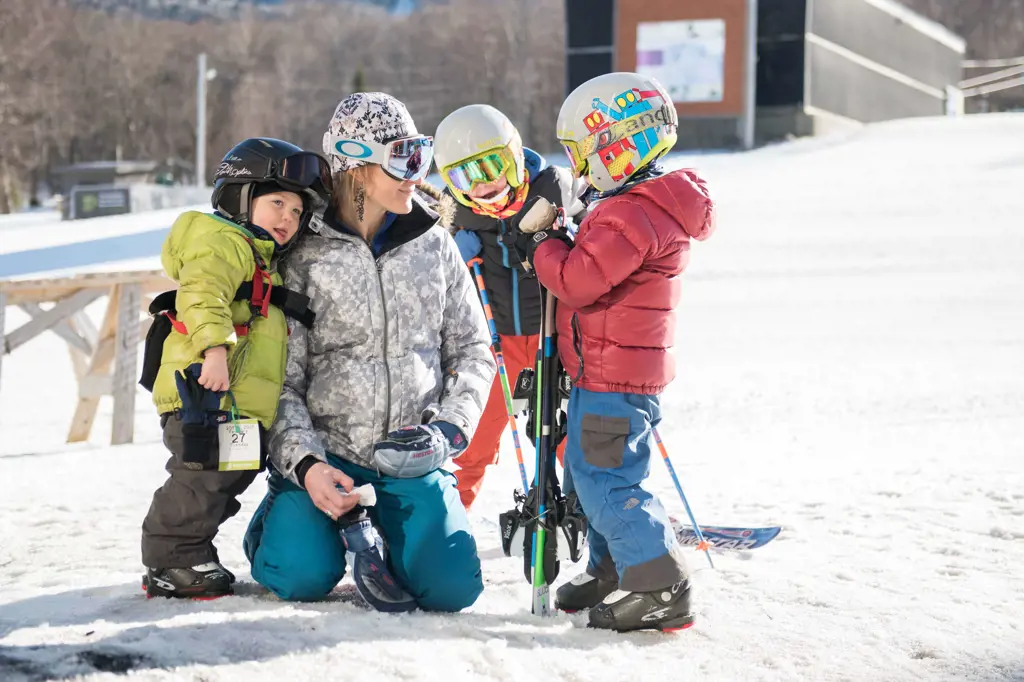
When planning a winter vacation with your kids, it's important to consider what type of equipment to bring for them. The right gear can make a huge difference in their comfort and enjoyment on the slopes. So, whether your kids are beginners or experienced skiers/snowboarders, here are some essential items you should consider packing.
Skis or Snowboards:
If your kids are interested in skiing, it's essential to bring skis that are suitable for their age and skill level. Beginners may benefit from shorter skis with softer flex, while advanced skiers may require longer skis with stiffer flex for better control at higher speeds. Snowboards are an excellent alternative for kids who prefer snowboarding over skiing.
Boots:
Boots play a crucial role in both skiing and snowboarding. It's vital to find properly fitting boots that are comfortable, provide good support, and allow for easy movement. Ill-fitting boots can lead to discomfort and even injury, so take the time to ensure the boots fit your child correctly.
Helmets:
Safety should be a top priority when skiing or snowboarding. A well-fitting helmet is a must-have for kids of all ages and skill levels. It protects their heads in case of falls or collisions and can greatly reduce the risk of severe head injuries.
Ski/Snowboard Bindings:
Bindings attach boots to skis or snowboards, allowing for control and maneuverability. Adjustable bindings are an excellent option for growing kids as they can be easily adjusted to accommodate their changing boot sizes.
Ski/Snowboard Clothing:
Proper clothing is essential for keeping your kids warm and dry on the slopes. Layering is key. Start with a moisture-wicking base layer, followed by an insulating mid-layer, and finish with a waterproof and breathable outer layer. Don't forget to pack warm socks, gloves/mittens, and a neck gaiter or face mask to protect against the cold and wind.
Goggles:
Quality goggles are crucial for protecting your child's eyes from the intense glare of the sun, snow, and wind on the slopes. Look for goggles with a good fit, anti-fog capabilities, and UV protection.
Safety Gear:
Besides a helmet, additional safety gear such as knee and elbow pads can provide extra protection, especially if your child is just starting to learn skiing or snowboarding.
Ski Poles (for skiers):
If your child is skiing, appropriate ski poles are necessary for stability and balance. Ensure that the poles are the correct length, allowing your child's arms to form a 90-degree angle when holding them.
Equipment Bags:
Invest in a sturdy equipment bag to carry and protect your child's skis, snowboard, boots, and other gear. Look for bags with padding and compartments to keep everything organized and secure during travel.
Lessons and Rental Options:
If your child is new to skiing or snowboarding, consider enrolling them in lessons to learn proper techniques and safety practices. Many ski resorts offer rental options for equipment, which can be a convenient and cost-effective option, especially if your child is still growing.
Remember, the specific gear your child needs will depend on their preferences, age, and skill level. It's best to consult with experts at a local ski shop or the resort you plan to visit to ensure you have the right equipment tailored to your child's needs. With the right gear, your kids can enjoy a safe and memorable winter adventure on the slopes.
What to Pack in Your Baby Bag for a Day Out with Your Little One
You may want to see also

Are there any specific safety items I should pack for my kids on a ski trip?
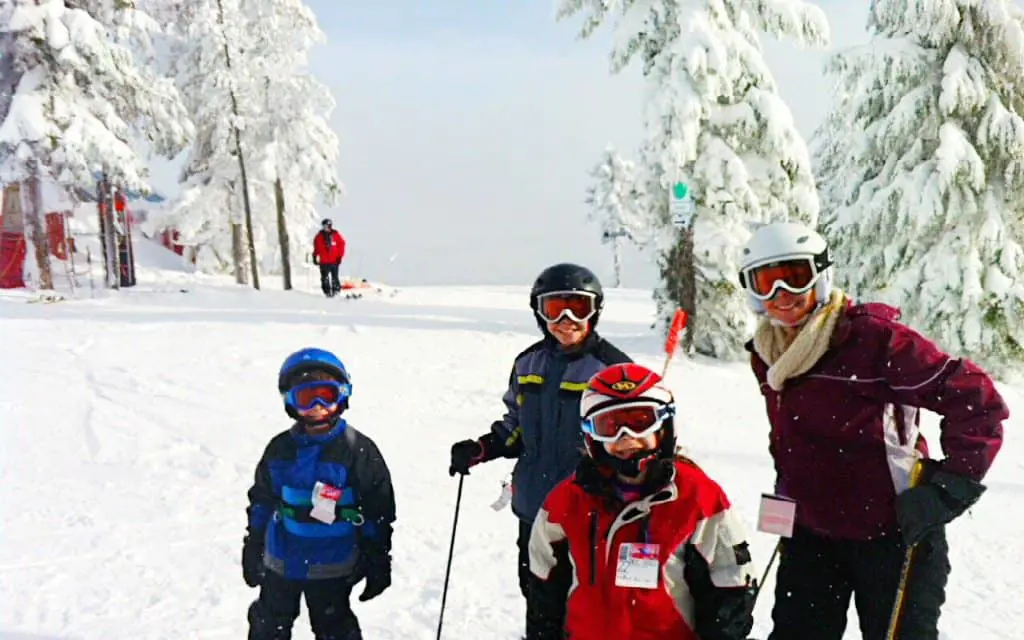
When planning a ski trip with your kids, it's important to prioritize their safety on the slopes. While you may already be well-equipped with jackets, boots, and goggles, there are a few additional safety items that you should pack to ensure a worry-free skiing experience. Here are some specific safety items to consider bringing for your kids on a ski trip:
- Helmets: The most essential safety item for skiing is a helmet. Ensure that each child has a properly-fitted helmet to protect their head in case of falls or collisions. Look for helmets specifically designed for snow sports with adjustable straps and proper ventilation to keep them comfortable throughout the day.
- Wrist Guards: Wrist guards can provide extra protection for your kids' wrists, which are vulnerable to injuries while skiing. They help to prevent fractures and sprains by stabilizing the wrist joint and absorbing impact during falls. Make sure the wrist guards fit properly and are comfortable for your kids to wear for an extended period.
- Knee Pads: Knee pads are another helpful safety item to protect your kids' knees from impact and injury. They can provide cushioning and support during falls, reducing the risk of sprains or contusions. Look for knee pads that are lightweight, breathable, and easy to wear under ski pants.
- Back Protectors: Back protectors or spine guards are recommended for kids who are learning to ski or engaging in more advanced maneuvers. These pads help absorb impact and protect the spine and vital organs in case of falls or accidents. Choose a size and design that fits comfortably underneath their ski jacket.
- Hand Warmers: Cold hands can be uncomfortable and distracting while skiing. Pack hand warmers in your kids' pockets to keep their hands toasty and allow them to focus on the slopes. These small heat packs can provide hours of warmth and are easy to activate by simply shaking them.
- Ski Socks: Proper ski socks are essential for keeping your kids' feet warm and dry. Look for socks made of moisture-wicking materials that provide cushioning and support to prevent blisters. Avoid cotton socks, as they absorb moisture and can make their feet feel cold and uncomfortable.
- Sunscreen and Lip Balm: Protecting your kids' skin from the sun's harmful rays is crucial, even on cold and cloudy days. Apply a waterproof sunscreen with a high SPF to their exposed skin, paying extra attention to their face, neck, and hands. Additionally, use a lip balm with SPF to prevent chapped lips from the cold and wind.
- Ski Goggles: Good quality ski goggles with UV protection are important for maintaining clear vision while on the slopes. They shield your kids' eyes from the sun, wind, snow, and potential debris. Look for goggles with appropriate lens tints for different weather conditions, and ensure a proper fit to prevent discomfort or fogging.
Remember, safety should be a top priority when skiing with kids. These additional safety items will provide an extra layer of protection and comfort, allowing your kids to enjoy their time on the slopes without unnecessary risks. Pack them along with the essential ski gear, and you'll be well-prepared for a fun and safe family ski trip.
Essentials for Packing When Visiting London
You may want to see also

What are some recommended clothing accessories to pack for my kids on a ski trip, like hats or gloves?
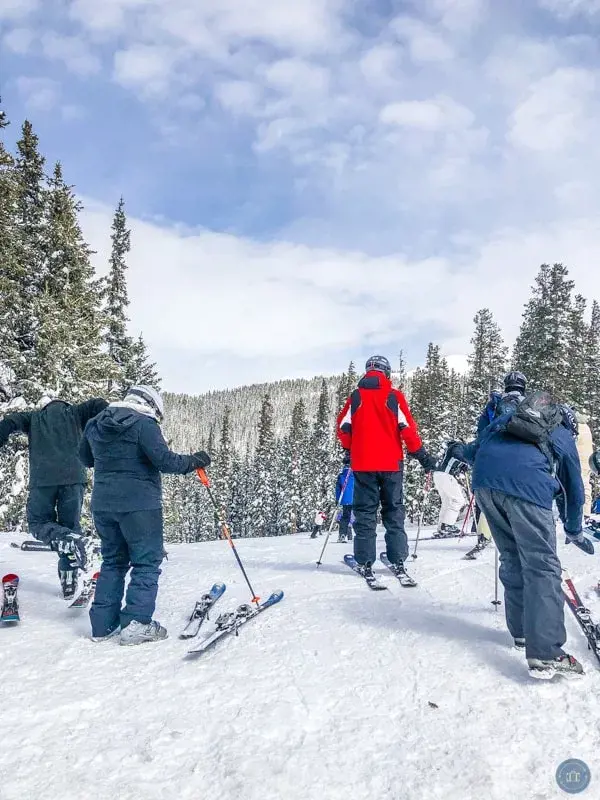
When planning a ski trip with your kids, it's important to ensure that they are properly dressed for the cold temperatures and snowy conditions. In addition to the usual ski clothing essentials such as jackets, pants, and boots, there are several key accessories that you should consider packing for your children. These accessories will not only keep them warm but also enhance their safety and comfort on the slopes. Here are some recommended clothing accessories to pack for your kids on a ski trip:
- Hats: A warm and snug hat is essential for keeping your child's head protected from the cold. Look for hats made from insulating and moisture-wicking materials such as fleece or merino wool. Ensure that the hat fully covers your child's ears to prevent frostbite. You can also opt for hats with built-in ear flaps or neck warmers for added warmth.
- Gloves: Properly insulated gloves are a must to protect your child's hands from the cold and moisture. Look for gloves specifically designed for skiing or snowboarding, as they are often waterproof and have reinforced palms for durability. Consider mittens for younger children, as they provide better warmth by keeping the fingers together. It's also a good idea to pack extra pairs of gloves in case they get wet or misplaced.
- Neck Gaiter/Balaclava: A neck gaiter or balaclava is a versatile accessory that can be worn around the neck, face, or head to provide additional warmth and protection. It can be worn as a scarf, pulled up over the nose and mouth, or used as a hat liner. Look for gaiters made from soft, breathable, and moisture-wicking materials to prevent discomfort and moisture build-up.
- Thermal Base Layers: Layering is key to staying warm in cold weather, and thermal base layers are the foundation of this strategy. Look for base layers made from moisture-wicking and insulating materials such as synthetic blends or merino wool. These base layers will help regulate your child's body temperature by wicking away sweat and trapping heat close to the body.
- Socks: Proper ski socks are essential for keeping your child's feet dry and warm. Look for socks made from moisture-wicking materials such as merino wool or synthetic blends. Avoid cotton socks, as they tend to absorb moisture and can make your child's feet colder. Make sure the socks are not too thick, as they can restrict circulation and cause discomfort.
- Goggles: Protecting your child's eyes from the glare of the sun and the wind is crucial on the slopes. Invest in a good pair of ski goggles that provide UV protection and have anti-fogging features. Look for goggles with adjustable straps and foam padding to ensure a snug and comfortable fit.
- Helmet: Safety should always be a top priority when skiing or snowboarding with your kids. A properly fitting helmet can protect their heads in case of any falls or collisions. Look for helmets specifically designed for skiing or snowboarding, as they provide better protection and insulation. Ensure that the helmet fits snugly and securely on your child's head without any gaps.
In conclusion, packing the right clothing accessories is essential for a successful and enjoyable ski trip with your kids. Hats, gloves, neck gaiters, thermal base layers, socks, goggles, and helmets are all important items to include in your packing list. By ensuring that your children are properly dressed and protected from the elements, you can maximize their safety, comfort, and enjoyment on the slopes.
10 Essential Items to Pack for a Cruise Vacation
You may want to see also
Frequently asked questions
When packing for a ski trip with kids, it is important to include essential clothing items such as thermal base layers, waterproof ski pants and jackets, warm hats, gloves or mittens, ski goggles, and thick wool socks. It is also a good idea to pack extra layers like fleece jackets or sweaters in case the weather gets colder.
Yes, it is highly recommended to pack extra gear for your kids on a ski trip. Safety is a top priority, and items such as helmets, knee pads, and wrist guards can help prevent injuries while skiing or snowboarding. Make sure these items fit your child properly and are in good condition before hitting the slopes.
In addition to clothing, there are a few non-clothing items that are essential for a ski trip with kids. Some important items to include are sunscreen to protect their skin from the sun's rays and lip balm with SPF to prevent chapped lips. It is also a good idea to pack snacks, water bottles, and a small first aid kit with basic medical supplies.
It is a good idea to pack some items specifically for après-ski activities or downtime at the ski resort. These can include comfortable clothes for lounging in the lodge, books or games to keep the kids entertained, and slippers or cozy socks for relaxing after a long day on the slopes. Additionally, don't forget to pack bathing suits and towels if the resort has a swimming pool or hot tub.


